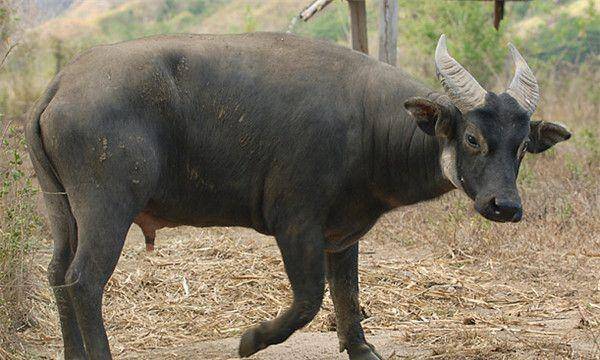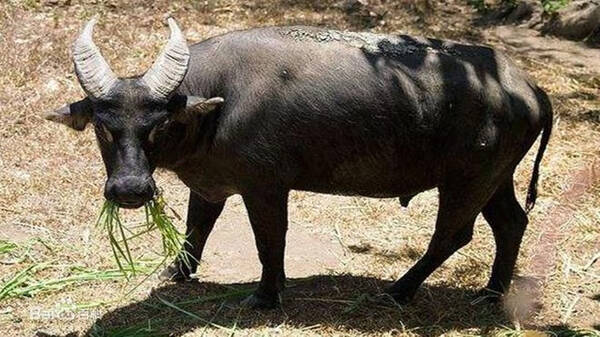Bubalus mindorensis
IUCN
LCBasic Information
Scientific classification
- name:Bubalus mindorensis
- Scientific Name:Bubalus mindorensis,Tamoro buffalo, Philippine buffalo, Mindanao buffalo, Mindoro buffalo
- Outline:Ungulata
- Family:Artiodactyla Bovidae Buffalo
Vital signs
- length:About 2.2 meters
- Weight:200-300kg
- lifetime:20-25years
Feature
The horns are short and black, and they are Y-shaped, not crescent-shaped like the buffalo.
Distribution and Habitat
The Mindoro buffalo lives on the island of Mindoro in the Philippines. The total range is estimated to be less than 300 square kilometers across the Philippine island of Mindoro (9,735 square kilometers). Although previously common throughout the island, the species is thought to be confined to three areas: Mount Iglit-Baco National Park, Mount Aruyan/Sablayan, and Mount Calavite Tamaraw Preserve, all three of which are national parks or protected areas.
The Mindoro buffalo inhabits tropical highland forests, grasslands, and swamps ranging from sea level on Mindoro to more than 2,000 meters above sea level. Most common in secondary forests and forests, scattered grasslands; in arid areas with the highest rainfall where Imperata and Sweetgrass grow; on exposed hillsides where short grasses grow mainly; including sedge, crabgrass, goosegrass, two-sided needle, hairy grass and duckweed; primary forests with borneol growth, along limestone remnant ridges; throughout areas of permanent a
Appearance
The Mindoro buffalo is 220 cm long, with an average shoulder height of 100-105 cm. The tail is 60 cm long, and the female is estimated to weigh 200-300 kg. The appearance of the Mindoro buffalo is typical of the Bovidae family. They have a short and strong body, hooved limbs, a small head with horns, and a short neck. They are smaller and stronger than the water buffalo. They have only mild sexual dimorphism: males have thicker necks.
The coat color of adult cattle is dark brown to gray. There are white markings on the inside of the hooves and forelimbs, which are shaped like the markings of the mountain Japanese water buffalo. The face color is the same as the body, and most of them have a pair of gray-white markings from the eyes to the horns. The nose and lips have black skin. The ears are 13.5 cm long and have white stripes on the inside.
The horns of the Mindoro buffalo are short and black, and the two horns are Y-shaped, rather than the crescent shape of the water buffalo.
Details
Mindoro buffalo (scientific name: Bubalus mindorensis) is also known as Tamaraw in foreign languages. It has no subspecies. Mindoro buffalo only live in Mindoro. Together with the fossils of the genus Bubalus found on other islands, it shows that they were once widely distributed in the Philippines. According to fossil records discovered in the 20th century, Mindoro buffalo lived in Luzon during the Pleistocene. Mindoro buffalo was first classified as a species of dwarf buffalo by French zoologist Pierre Marie Heude in 1888. Later, it was discovered that dwarf buffalo should be part of the genus Bubalus. Their close relationship with buffalo has been confirmed and they were classified as a subspecies of buffalo in 1958. Genetic analysis also supports this close relationship. In 1969, they were promoted to an independent species, so the scientific name of Mindoro buffalo was also changed.

Like other cattle, Mindoro buffaloes roll in muddy pits, probably to avoid insect bites. Mindoro buffaloes are ferocious by nature. When threatened, they lower their heads, point their horns at each other, and shake their heads constantly.
Mindoro buffaloes are solitary and do not live in groups. Only young bulls display the group behavior and hierarchy of ordinary buffaloes. Bulls and females will also come into contact throughout the year, but only for a few hours. Their solitary behavior is said to be an adaptation to their forest habitat. Male bulls often live alone and seem to be aggressive; female bulls can live alone, with male bulls, or with three calves of different ages.

Mindoro buffaloes give birth to one calf per litter, with a gestation period of 300 days. Each litter is two years apart. The calf will be cared for by the mother for 2-4 years before it can become independent. The average lifespan is 20 years, but can reach 25 years.
Mindoro buffalo are listed as critically endangered because they are so rare and only found in Mindoro. They are found in an area of less than 500 square kilometers, with only five known locations. There are many reasons for the decline of the Mindoro buffalo. Human development in Mindoro has put pressure on the population of Mindoro buffalo, and hunting, cooking, and loss of habitat have caused a significant decline in the population. In the 1930s, invading European cattle caused a severe cattle plague, which also infected Mindoro buffalo. Their population was less than 300 in 2007. The estimated population of Mindoro buffalo in the 1900s was about 10,000; by 1949, their population was about 1,000; in 1953, less than 250 were still alive. The World Conservation Union found that their numbers have been declining, with less than 100 left. In 1975, it rose slightly to 120. Now it is believed that there are only about 30-200 left.
Due to the decline of the Mindoro buffalo, the Philippines has laws and institutions to conserve them. The law includes prohibitions on hunting and harming Mindoro buffalo except for self-defense, and deterrent fines and imprisonment. In addition to legal prohibitions, a number of conservation efforts are also underway, including breeding and cultivating Mindoro buffalo and establishing gene pools. In 2007, the Mindoro buffalo was listed in Appendix I of the Convention on International Trade in Endangered Species of Wild Fauna and Flora, and any commercial trade in Mindoro buffalo and its derivatives is prohibited.
Listed in the 2008 Red List of Endangered Species of the World Conservation Union (IUCN) ver 3.1 - Critically Endangered (CR).
Listed in Appendix I of the Washington Convention on International Trade in Endangered Species of Wild Fauna and Flora (CITES) Appendix I, Appendix II and Appendix III of the 2019 edition.
Protect wild animals and eliminate game.
Maintaining ecological balance is everyone's responsibility!








